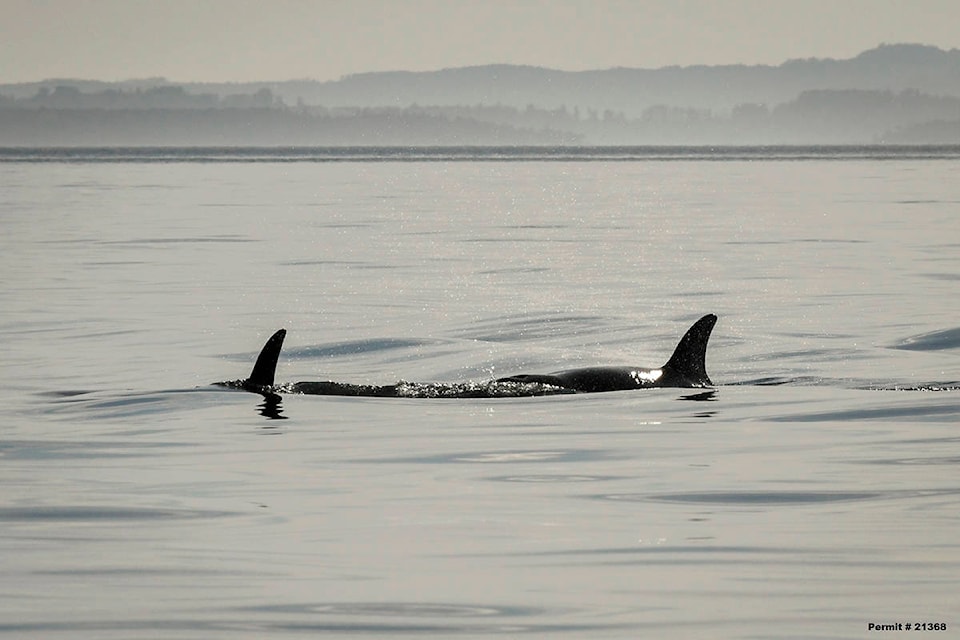Scientists have finally located an emaciated female killer whale off the coast of Vancouver Island after struggling to locate her since Saturday.
Both American and Canadian research teams had been working to examine J50, also known as Scarlet, who is believed to suffer from a syndrome called “peanut head,” where her head appears too small for her body, possibly because of malnourishment.
On Wednesday, officials said she was spotted the afternoon before, swimming with her mother, J16, and a few other orcas in the J pod along the Juan de Fuca Strait between Sooke and Port Renfrew.
“J50 was staying close to her mom and was keeping up well, moving at a casual speed and undertaking what we call ‘logging behaviour,’ which is a resting behaviour with low transience movement,” said Sheila Thornton, research scientist with the Department of Fisheries and Oceans Canada.
READ MORE: Canadian laws could prevent emaciated killer whale from being treated
Scientists are now analyzing breath and fecal samples to determine whether to go ahead with a first-of-its-kind plan to save the animal by feeding it salmon that’s been injected with antibiotics.
Lynne Barre with the National Oceanic and Atmospheric Administration in the U.S. said while scientists work quickly to help a wild animal in an unusual circumstance, the process is being taken step-by-step with no guarantees in how J50 recovers.
“Based on what we can learn from the sampling, we may consider additional treatments for fungal infection, for parasites,” she said.
Feeding antibiotics in salmon still under review
Officials on both sides of the border have been trying to work around Canadian laws that prevent close feeding.
The Canadian government has limited the chinook salmon fishery to help the recovery of the southern resident killer whales. Vessels must also stay a minimum distance of 200 metres away from killer whales.
Paul Cottrell, marine mammals coordinator with the Department of Fisheries and Oceans Canada, said an “unprecedented” permit has been secured to feed the whale with a pole or darts.
However, DFO scientists will still need to review a permit to feed J50 with salmon. An application had yet to be submitted by the biologists involved.
Thornton said one of the key differences between Canadian and U.S. laws around these kinds of procedures falls under the Species at Risk Act.
As there are only 75 southern resident killer whales left, Thornton said, a comprehensive review is necessary to ensure any plan to help an animal at risk of extinction does not further harm it.
While the NOAA focuses on the potential benefits, she added, Canadian scientists are probing the negative effects feeding J50 may have.
“Anytime we undertake a close approach that distracts the animal from, for example, foraging, we put that animal at potential risk of decreasing its nutritional input,” she said.
Visibility on the waters to play key role in next steps
Vessels on both sides of the border were on the water on Wednesday, with responders again searching for the J pod.
Officials said choppy waters and fog off Vancouver Island have caused problems all week.
Crews are conducting “stop, look and listen” procedures, which involves a 360-degree visual scan of the waters and a 15-minute hydrophone drop to detect sounds underwater.
@ashwadhwani
ashley.wadhwani@bpdigital.ca
Like us on Facebook and follow us on Twitter.
